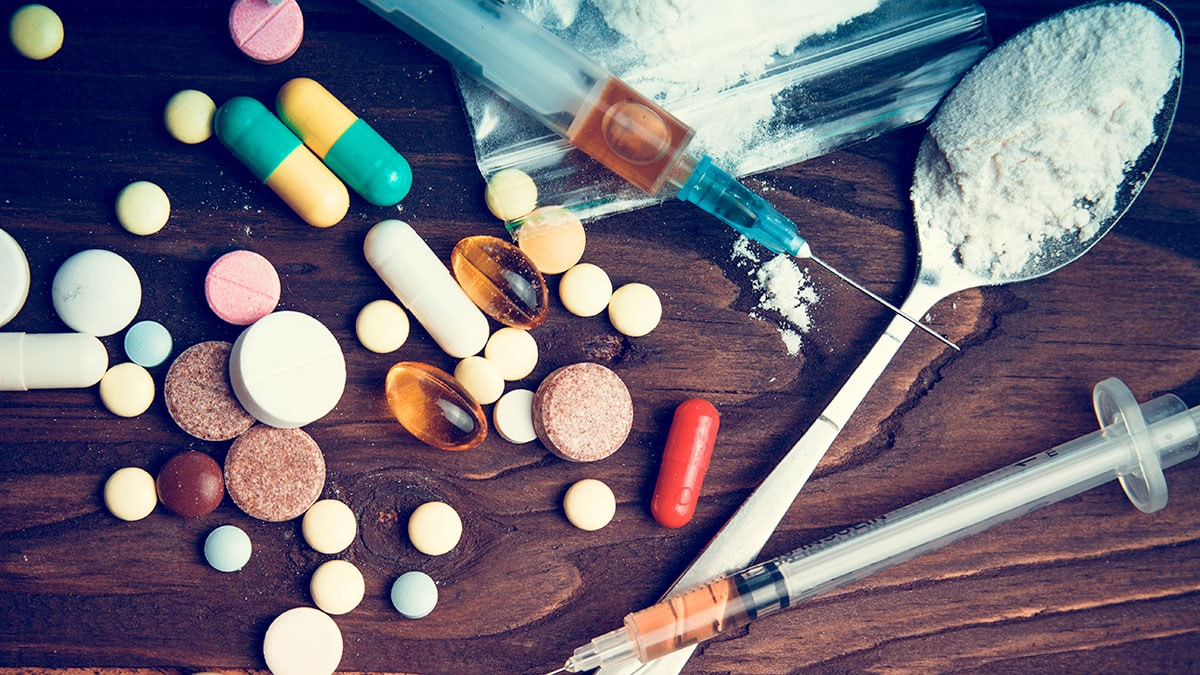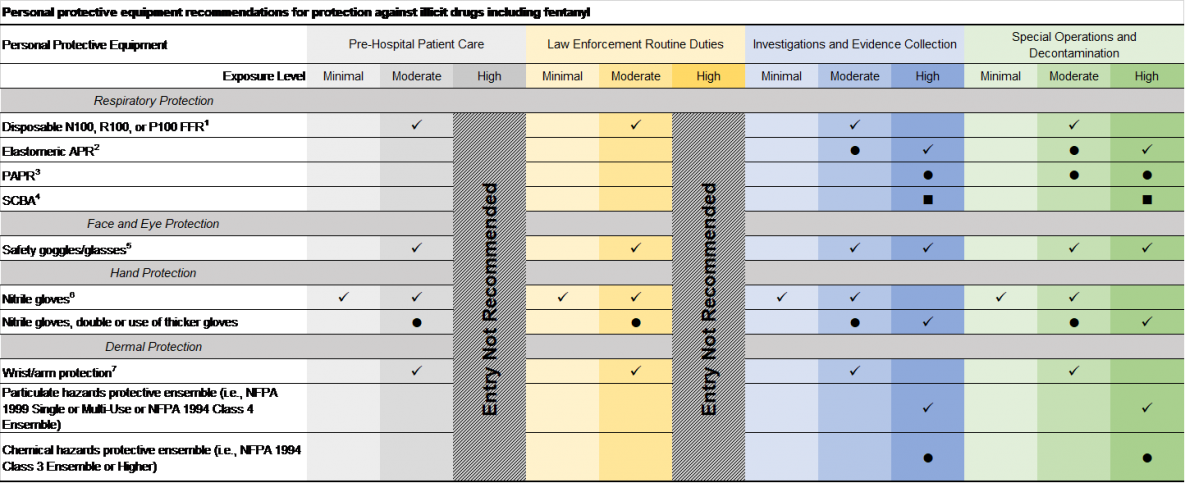Purpose
- Identify how emergency responders come into contact with illicit drugs.
- Describe job categories that may have potential for exposures to illicit drugs.
- Identify the appropriate PPE for protection against potential exposure to illicit drugs.

Illicit drug exposure
Illicit drugs can be in powder, pill, or liquid forms. Emergency responders can come into contact with illicit drugs by:
- Breathing (Inhalation)
- Eating (Ingestion)
- Touching eyes, nose, or mouth with contaminated hands or gloves or when illicit drugs come into contact with the eyes, nose, or mouth directly (Mucosal)
- Liquid illicit drugs may be absorbed by the skin (Dermal)
- Being stuck by a needle (Percutaneous)
Job categories at risk of exposures to illicit drugs
Pre-Hospital Patient Care: Emergency medical services (EMS) providers, including first responders, fire departments, and private companies, attend to patients with suspected illicit drug overdoses. Responders may encounter illicit drugs or drug paraphernalia on or near the patient.
Law Enforcement Routine Duties: Officers who perform day-to-day law enforcement duties may come into contact with illicit drugs. This occurs during the course of their daily activities, including traffic stops, apprehending and searching subjects, and responding to overdose calls.
Law Enforcement Investigation and Evidence Collection: Law enforcement personnel who conduct investigations and handle evidence related to illicit drugs. Activities may include carrying out search warrants and collecting, transporting, processing, and storing evidence. Evidence collection activities in the field have the potential to aerosolize powders. Law enforcement personnel who handle evidence in the chain of custody have the potential to come into contact with illicit drugs unless steps are in place to prevent exposures.
Special Operations and Decontamination: Workers who conduct special operations where exposure to large amounts of illicit drugs, including fentanyl are expected and may enter the air. Examples include hazardous material incident response teams and law enforcement officers carrying out search warrants at large scale illicit drug processing or distribution sites, or law enforcement officers participating in tactical operations.
PPE Recommendations
The following table provides PPE recommendations for protection against potential exposure to illicit drugs. Identify the PPE appropriate for the risk by first selecting the correct job category, as defined above. Then identify the potential level of exposure anticipated. Potential exposure levels are defined as follows:
Minimal: Response to a situation where it is suspected that illicit drugs may be present, but no illicit drug products are visible
- Example: An EMS response to a suspected drug overdose or law enforcement operation where information indicates illicit drug products are suspected but are not visible on scene
Moderate: Response to a situation where small amounts of illicit drugs in powder or liquid are visible
- Example: An EMS response to a suspected overdose or law enforcement operation where illicit drug products are suspected, and small amounts of powder or liquid are visible on scene
High: Response to a situation where large amounts of illicit drugs in liquid or powder form are visible
- Example: An illicit drug storage or distribution facility, milling operation, or production laboratory
It is important to recognize that the potential exposure level initially selected can change and that PPE should be adjusted accordingly. Higher levels of PPE may be necessary to protect responders from exposure to other hazards (e.g. in a methamphetamine lab) that may also be present in addition to the illicit drugs.
These recommendations cover examples of common exposures but are not intended to prescribe PPE for every responder or exposure or discuss all PPE options.
- All PPE should be used in accordance with the OSHA PPE standard (29 CFR 1910.132). When required, respirator use should be in the context of a comprehensive respiratory protection program in accordance with the OSHA respiratory protection standard (29 CFR 1910.134) and other requirements.
- Responders who need to wear respirators must be medically cleared, trained, and fit-tested for respirator use. Detailed information on respiratory protection programs, including fit-testing procedures, can be accessed at OSHA's respiratory protection eTool.


